#adoptingadog
Text

🐶Adopting a puppy: What to expect🐾🐾
🐕🦳👴
Introduction
Adopting a puppy can be an incredibly rewarding experience, but it also comes with its own set of challenges. Before bringing a new furry friend into your home, it's important to...
🐕🏫 👇 READ MORE 👇
0 notes
Text

🐾🌺Adopting a puppy: What to expect🐕👓
🐾🧁
Introduction
Adopting a puppy can be an incredibly rewarding experience, but it also comes with its own set of challenges. Before bringing a new furry friend into your home, it's important to...
🐾🎃 👇 READ MORE 👇
1 note
·
View note
Link
#adoptingadog#benefitsofowningadog#dogactivitylevel#dogbreedcomparison#dogbreeds#dogcosts#dogforapartment#dogforfamily#doggroomingtips#doghealthproblems#dogrelationship#DogSize#DogSupplies#dogtrainingbasics#travelingwithadog#WhatDogBreedShouldIGet
0 notes
Text
What you Absolutely Need to Know Before Adopting a Dog
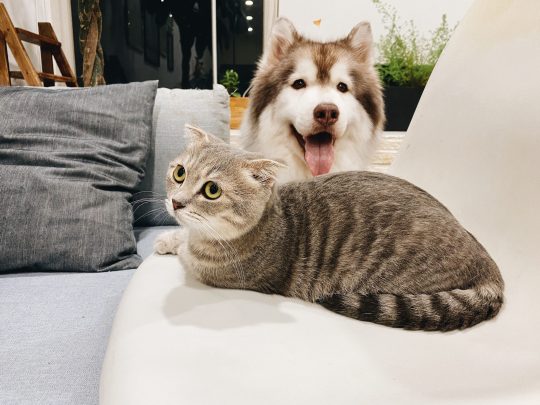
There's something about the little face of a puppy... irresistible. It's so cute that it awakens a completely spontaneous and emotional side in us. Even if it means completely putting reason aside.
But once the cute moment is over, bringing a pet home is a huge responsibility. And despite the fact that all the sources say so, few people fully realize it until it is “too” late. Here's what you need to understand most seriously before welcoming a new member of the four-legged family.
What You Need To Know Before Adopting a Dog

Photo by Tran Mau Tri Tam ✪ on Unsplash
Dogs versus Cats
Without entering into the debate on the superiority of one or the other (I have a copy of both specimens at home and I like them just as much), it is certain that the responsibility of one and the other is VERY different.
Cats are much more independent, potty trained almost instantly can be left alone for long periods of time, etc.
Dogs, especially if you adopt them at a young age, don't do any of that. They require a lot more time, patience, and energy, period.
So if what you're looking for most in an animal is “a minimum of trouble,” it's pretty clear which of the two you should choose!
The time spent at home
Unlike cats who won't take too much offense to your long work hours or active social life, dogs are very dependent beings. It will be imperative to plan to be at home at regular times and to have time to devote to them. EACH DAY. GOOD WEATHER, BAD WEATHER.
Although many dogs do, no pooch really benefits from spending 45 or more hours a week alone! And this is especially when they are young and in training, when their bladder does not allow them to hold back for 8, 9, or 10 hours of time.
If you can't, say, come home during the day to go out or walk the dog, there are services that can do that for you. As well as dog daycares, for the most sociable/energetic doggies/who find it difficult to be alone! However, these services are not given and must be added to the overall canine budget (see the corresponding section below).
The walks
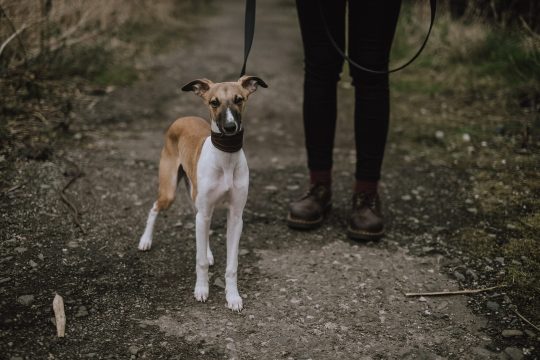
Photo by Mitchell Orr on Unsplash
Although this will vary depending on the age, size, breed, and temperament of the dog, it is to be expected that a dog will need approximately 1 HOUR of walking/running/playing outside per day. Even when it's pouring rain. Even when it's -26.
Once clean and adolescent, a dog will need to go out to relieve himself (even without necessarily taking a walk) a minimum of 4 to 6 times a day.
Some dogs of larger and quite energetic breeds can also become good companions for your physical activities, for example jogging or hiking in the mountains. On the other hand, this training cannot usually begin before 1 year and must be done gradually. It is therefore not a “magic formula” to exhaust an overly nervous puppy!
The first year
A dog becomes an adult between 12 and 18 months. Before that, he will require… up to 20 times more time, energy, and difficulty than his compatriot aged 2 and over. Not twice, 20 times! To get through this famous first year, you have to prepare and… expect the worst. For real.
Cleanliness alone will take between several weeks and several months, at the beginning. And those weeks of constantly picking up accidents everywhere, seem particularly long and debilitating.
Potty training also includes the night: unless you have pee pads, you will probably have to take your doggie out at least once … which seems like an eternity. Some puppies are still not potty trained at night at 6 months.
A large part of dog abandonment occurs during this first year of life, especially during the height of adolescence, that is to say between 5 and 9 months. Just like humans, the dog during this period may have completely disconcerting behaviors, which call into question what we thought we knew about him. For example, but not only:
- Having a regression in cleanliness
- Don't listen like before
- Unresponsive to basic commands
- Willfully challenging your authority
- Eating your needs (or those of the cat!)
- Running away when he's never shown that will before
- Begin to bark furiously at passers-by, neighbors, or other dogs
- Chew EVERYTHING in the house (shoes, cushions, cabinets, walls, stair railing, mosquito nets, furniture, carpets, sofas, etc.)
- Make insane impulsive gestures, for example throwing yourself in front of a bus!
Activity level

Photo by Patrick Hendry on Unsplash
One hour of walking does not correspond to the total time of activity, interaction and stimulation that a dog needs. And then it's an average: while some (especially very small and very large) dogs need little activity, some other high-energy breeds need a lot more than that!
This is among others the case of the Huskies, whose breed was developed for the endurance of the specimens as well as their ability to pull heavy sleds at full speed for a whole day! The same goes for sheepdogs, like my border collie Bowie.
This breed has been used for hundreds of years to herd sheep in Scotland over very rough terrain and in extreme weather conditions. So don't expect these frighteningly intuitive and intelligent dogs (a little too much, sometimes) to be able to make an automatic transition like apartment dogs who sleep all day!
It is therefore essential to choose a dog for its level of activity and energy, AND NOT for its physique. This is probably the #1 mistake people make: falling in love with a dog because it physically matches their dream idea.
If you are quite sedentary and very busy, it is obvious that you enjoy the experience more with a dog that is lower in the scale of energy and attention! Again, these are often very small dogs whose breed was specifically developed to keep humans company rather than a "job" at hand, e.g. Chihuahuas, Pugs, Yorkies, etc. But also very large "gentle giant" dogs such as Great Danes, Great Danes, Newfoundlands, etc. fall into this category.
Once the puppy stage is over, many popular breeds like Labradors and Bernese Mountain Dogs also become much quieter and more accommodating!
Training
A dog is like a child; it does not educate itself. He will need to learn – and much sooner than most people think – not only the basic commands but also discipline, how to act in different situations, and socialization (with humans and dogs).
Neglecting this demanding step often only invites problems for later, unfortunately. With rewards, most dogs train well, but it takes time and consistency, every day. Even when we are tired. Even when you have a ton of other things to do. Even when you don't want to.
Dogs are ready for their first "obedience" classes from 8 or 9 weeks, in any case ideally before 16 weeks, before taking "bad folds".
Stolen Freedom
This is another thing that we do not realize right away, but adopting a dog immediately restricts freedom. Every time you leave, you have to make sure you get back in time to get it out. More than 5 to 7 improvised after the office, ever.
And a lot of stress if something doesn't go as planned (unusual traffic jam, breakdown in public transport, etc.)
Having a dog also means taking action every time you go away for a full day or more, even if it's only a day of skiing, for example. Since he cannot stay alone, you also have to find a pension or another place to take him when you go away on a weekend, on a business trip, during vacations, etc.
The costs
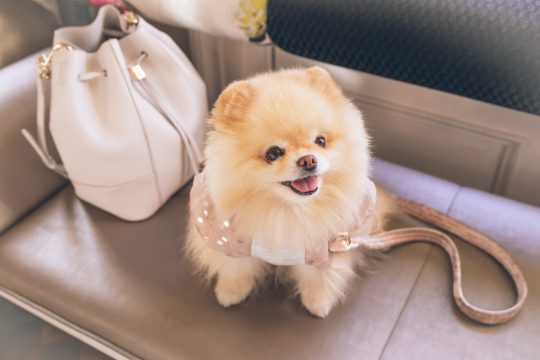
Photo by FLOUFFY on Unsplash
Buying a dog is often expensive and sometimes even very expensive for some breeds! It can go for over $1,000. But that's nothing compared to the rest.
- Veterinary fees: vaccines (depending on the weight of the animal but can correspond to several hundred dollars per year), routine examinations (from $60), follow-up appointments, sterilization (can also correspond to several hundred $ depending on the size of the dog, more expensive for a female), flea and tick treatments ($100)
- Registration fees: $100 for a microchip, $30 for a medal depending on the municipality, etc.
- Food: variable according to the weight, age, and specific conditions of the animal but can range between $25 and more than $100 per month. Some large puppies eat up to 8 cups of dry food a day!
- Treats: Indispensable for training, they often cost more than you think! One can easily add $20 per month.
- Toys: Variable according to the type of dog and not always equal from month to month, but to be taken into account all the same.
- Bones and other things to chew: Also essential for many dogs who have an irrepressible need to chew – this can save many pieces of furniture and household items that you hold dear. Another $10-20 per month.
- Basic equipment: A cushion, a good cage, an enclosure, a box or a transport bag, etc. $200 and up.
- Specialized equipment: Depending on your needs… A harness or net for the car, a jogging leash, a backpack for hiking, etc.
- The bags for the needs (and the pee pads): Not to be neglected either.
- Leashes, harnesses, collars, and co: Because they grow, wear them out, break them or eat them: occasional but another expense.
- Grooming: Depending on the size of the dog, between $40 and $90.
- Obedience classes: Variable but at least $30 to $40 per session.
- Occasional help from professionals for specific behavioral problems: A good investment, even if it's around $90 an hour.
- A walk while you're at work: Between $10 and $20.
- One day of daycare: Between $20 and $40 per day.
- One-weekend boarding: Around $250.
- Replacing what the dog broke: A few pairs of shoes is one thing. But a rug, a pouf, and two sofas are very expensive!
And that's for a perfectly healthy dog! Except that most dogs end up developing medical problems during their lifetime.
And that of course means additional costs, whether in specialized food, medication, surgery, following an accident, etc. It is not uncommon for owners to have to spend several thousand dollars at the vet.
see also: The 15 most beautiful cats breed in the world
Pet shops, it's no!
Read the full article
#adoptadog#adoptapitbull#adoptingadog#adoptingadogatashelter#adoptingadogfromashelter#adoptingadogfromasheltertips#adoptingadoghouston#adoptingadogtips#adoptinganewdog#adoptingapuppy#adoptingarescuedog#adoptinganimalsatshelter#adoptingdog#adoptingdogfirstdayhome#adoptingdogs#bringinghomearescuedog#gettingarescuedog#howtoadoptadog#iadoptedadog#rescuingadog
0 notes
Photo

Daily pup: Hopscotch wanted to be near me so badly that I stuck her bed in the well of my desk so she could snooze beside my feet. #adoptingadog #hopscotchthepup #puppytime #dailypup
11 notes
·
View notes
Text
If you are someone who travels regularly and has a very erratic schedule, make sure that you have someone to take care of your pet when you are away. You might take your pets with you on travels occasionally, however, you cannot take them on a regular basis or leave them by themselves.
Regardless of age, the dog or the cat you adopt may require training. You have to be patient with them and train them responsibly. If you feel like you can't train them and give months to them, do not go for adoption.
0 notes
Text
3 Things To Consider When Choosing Your Rescue Dog

Getting a rescue dog is a major step. While it is immensely rewarding to take a dog into your home, particularly if it has had to go into a rehoming center for whatever reason.
But before you take the plunge and take a dog home, it is essential that you take into consideration what the dog needs, and whether you are the right person to get this to them.
Many people will rush to make a decision because they want a dog in their lives, however, they may not fully anticipate the level of care and attention that you need to give to the dog.
Before you choose which dog to get, here is some advice to help you make the right decision for you, and for the dog.
Picking The Right Dog For Your Lifestyle
Different breeds of dogs have different temperaments. Many types of dogs were originally bred to perform a particular type of job, whether that is hunting, or guarding. For this reason, dogs will have a natural inclination to act in a certain way. It is important that you read up on the temperaments of the many different breeds to make sure you are getting a dog that will suit your household and your lifestyle. For example, you may want to know which is the best breed of dog for seniors as you might not want a dog that requires too much energy on their walks. If you have young children in your home, you will need to think about getting a dog that shows no sign of aggression and is very child-friendly.
But, once you have identified a breed of dog that is right, remember that dogs have their own personalities. A rescue dog may have also had a traumatic time and would have developed anxiety when left alone, or around other people and dogs. Make sure you find out about any specific dog you end up looking at.
Taking The Best Care Of Your Dog
When you get your dog, you will need to think about the type of diet you will feed it. Just like people, dogs can develop serious health problems if they eat a poor diet. You might think that any dog food will be fine for your dog, however, this is not the case. Make sure and get nutrient-rich dog food. You may also need to think about supplements too.
Exercising Your Dog
Whatever breed of dog you decide to go for, it will require exercise. This means daily walks. The length of time and the intensity of the walk will depend on the breed and age of the dog in question. Make sure that if you are looking at getting a dog that is high energy and requires long walks more than once a day, that you are able to do this. Similarly, if you are getting a dog that will enjoy off-the-lead runs, make sure you have somewhere that they can go to do this nearby.
Read the full article
0 notes
Text

🐾💤16 THINGS TO THINK ABOUT BEFORE ADOPTING A DOG🐕👅
🐾🌈
Introduction
Adopting a dog is a big decision and should not be taken lightly. Bringing a dog into your life can be incredibly rewarding, but it also requires a lot of time, effort, and commit...
🐾💤 👇 READ MORE 👇
1 note
·
View note
Text
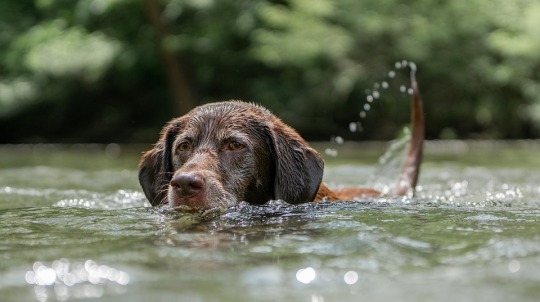
🐾🍦16 THINGS TO THINK ABOUT BEFORE ADOPTING A DOG🐶
🦴💦
Introduction
Adopting a dog is a big decision and should not be taken lightly. Bringing a dog into your life can be incredibly rewarding, but it also requires a lot of time, effort, and commit...
🐾🤔 👇 READ MORE 👇
1 note
·
View note
Photo
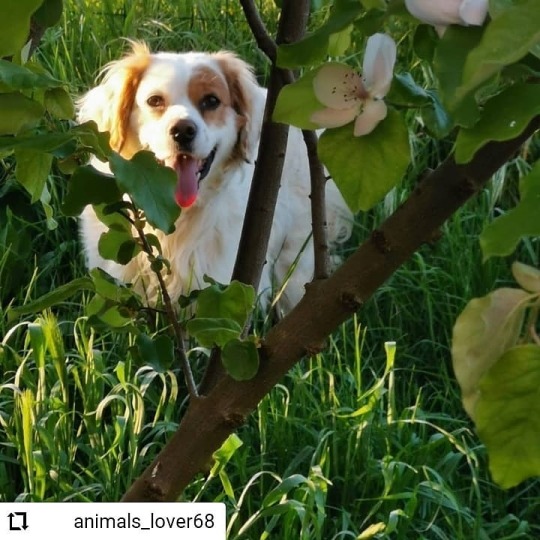
Repost by @_reposta ——— #Repost @animals_lover68 ... 🆘*Aky cerca casa*🆘 Aky ha 2 anni pesa 15 kg ed è un amore. È un Breton dolcissimo, affettuoso, bello, compatibile con maschi e femmine. Castrato e chippato. Era in canile ed aveva uno sguardo talmente triste da non riuscire a sostenerlo, così un gruppo di mamme lo ha tirato fuori e messo in stallo casalingo. Ora è felice perché è libero e può correre. Però una famiglia tutta x lui sarebbe il massimo della felicità. Si trova in provincia di Benevento. Adozione con pre e post affido. Per info solo wapp: 3280247760 Imma Per favore condividete ovunque. Grazie. #adottatemi #adottauncanedalcanile #adottanoncomprare #adottauncane #adozioneurgentecercasi #adottauncanedallastrada #dogoftheday #lovedogs #dogsofinstaworld #dogslover #dogs_of_instagram #dogslife #caneinadozione #caniadulti #AdoptDontShop #adoptadog #adoptingadog #toptags #salvaunavita #Canile #trentinoaltoadige #veneto #toscana #piemonte #lombardia #emiliaromagna #umbria #valledaosta https://www.instagram.com/p/COVrWnXl3_Y/?igshid=1chbpf587mg8w
#repost#adottatemi#adottauncanedalcanile#adottanoncomprare#adottauncane#adozioneurgentecercasi#adottauncanedallastrada#dogoftheday#lovedogs#dogsofinstaworld#dogslover#dogs_of_instagram#dogslife#caneinadozione#caniadulti#adoptdontshop#adoptadog#adoptingadog#toptags#salvaunavita#canile#trentinoaltoadige#veneto#toscana#piemonte#lombardia#emiliaromagna#umbria#valledaosta
0 notes
Photo

Daily pup: Hopscotch was chewing on a toy when I came out of the bedroom. #adoptingadog #puppytime #hopscotchthepup #dailypup
14 notes
·
View notes